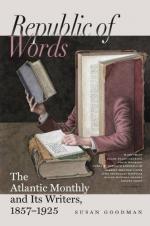he did not reach Sienchimalen until the fourth day.”
The main discrepancy here is Mr. Wilson’s own
handiwork, as he has confounded the “Sienchimalen”
of Cortes with Jalapa, instead of identifying it with
the “Socochima” of Bernal Diaz. But
so far as there is any real discrepancy, it may be
sufficient to remark, in explanation of it, that Bernal
Diaz professes to have written many years after the
events which he narrates, and at a distance from the
scene, while the letters of Cortes were written in
the country, and while the events were taking place.
On another occasion, Bernal Diaz represents the Tlascalans
as complaining that they could “get no cotton
for their clothing.” “If this writer,”
says Mr. Wilson, “had really been acquainted
with the tribes of the table-land, he must have known
that the fibres of the
maguey were, among them,
substitutes for that article, and are even now used
at the city of Mexico in the manufacture of some fine
fabrics.” We do not see how Bernal Diaz
could be expected to know that the fibres of the
maguey
are now used in Mexican manufactures; neither can we
comprehend how his statement, that the Tlascalans had
no cotton, is at variance with Mr. Wilson’s
assertion, that they used the
maguey as a substitute.
We can imagine, however, that an old soldier, writing
for the “uninitiated,” might prefer to
speak of cotton, for which he had a Spanish word,
rather than enter into explanations in regard to an
Indian substitute for cotton, resembling it in appearance;
while it is not easy to believe, on Mr. Wilson’s
bare assertion, that an article in common use throughout
the Valley of Mexico was wholly unknown to the inhabitants
of the table-land.
These, and, so far as we can discover, these alone,
are the proofs on which Mr. Wilson convicts Bernal
Diaz of being a nonentity,—of having, like
Rosalind in “As you like it,” merely “counterfeited
to be a man.” As a natural sequitur
to this delicious train of reasoning, he proceeds
to take this nonentity, this “myth,” as
his guide throughout the narrative of the Conquest.
“We may safely follow Diaz,” he remarks,
“in unimportant particulars”; and the “particulars”
of the Conquest being, in Mr. Wilson’s narration
of them, all equally “unimportant,” he
is so far consistent in following Diaz throughout.
Surely the Grecian fables will never grow old; here
again we have blind Polyphemus groping in pursuit
of cunning [Greek: Outis]. But we must be
allowed to ask Mr. Wilson why he has not rather preferred
to take Gomara as his guide. It is true that
he entertains a strong loathing, a rooted aversion,
for this harmless old chronicler, whom he calls always
“Gomora,”—associating him, apparently,
by some confusion of ideas, with the ancient city
of bad fame, buried with Sodom beneath the waters of
the Dead Sea. But, at least, he does not deny
that Gomara had an actual existence, that he was a
veritable somebody,—a reality, and not a




